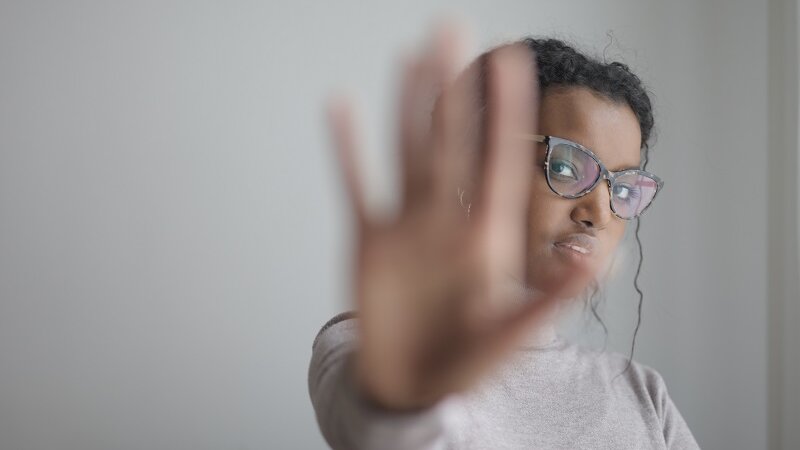The Art of Positivity
Episode #1 of the course How to become happier: A guide to reprogramming your thinking by John Robin
Welcome to our course on how to become happier.
My name is John Robin. I’m an author and an entrepreneur. I enjoy writing educational nonfiction. In fact, I enjoy writing it so much, it is a great source of happiness in my life.
I’ve now written 15 Highbrow courses that cover numerous topics: writing, math, science, productivity, health, wellness, and with my most recent, exercise: Hack Your Workout: A Self-Paced System For Core Muscle And Posture Strength.
So, why am I now writing a course on becoming happier?
The truth is: I was not always a happy person.
I started my journey of transformation from a very negative place, and when I made the commitment to change myself, I made the commitment to change my thoughts. I have been working on this every day since, for more than 11 years, using cognitive behavioral science as my main tool.
Today, I am a very happy person. But achieving this balance took a lot of work, and the techniques I’ve developed are worth spending a course on.
This course is all about the art of becoming happier. We will start from the ground floor and work our way upward, starting with today’s lesson.
The Art of Positivity
Think of the art of becoming happier like a series of Russian dolls.
Each of these dolls is an art, encasing one another. The innermost doll is the art of positivity. The outermost is the happy person you are trying to become.
Positivity is the process of cultivating positive thinking.
Positive thinking is not as simple as it’s often made out to be. It is very difficult, in fact. This is why we will spend a lesson talking about it because thinking positively isn’t as simple as just “staying positive”.
Developing positivity is a multi-step process.
Step 1: Notice negative thinking.
This will not be hard, because it’s everywhere.
Why is that?
We are programmed, by our survival brain, to process and react to negative input. We evolved to survive threats. We evolved to anticipate threats and plan our way out of them. Negative thinking is the most natural state of the brain because negative thoughts allow us to construct the most likely image of danger in the world, in order to survive it.
This worked well long ago before we had stable societies, law enforcement, grocery stores, and well-built homes with security systems.
It’s a problem for us now though. Instead of seeing a dangerous pack of lions, we see negative bank balances. Instead of thinking about how we can outrun the lions and survive, we dwell on worries about how debt is mounting, and soon we’ll need a second credit card.
Adrenaline, which is released under prolonged stress, is great to keep us going as we outrun those lions, or fight to survive. Now, though, that adrenaline fuels those negative thoughts about debt and soon it’s 2 am and we’ve moved on from worrying about that second credit card to thinking about how much we hate our job and our coworkers, and how miserable we feel in life.
Negative thinking abounds. Step 1 of the art of positivity is recognizing this, which allows you to move to:
Step 2: Catch a negative thought when it happens, then try to think of its opposite.
For example:
I’m so pissed off at this traffic jam, it’s wasting all my time.
This can be converted to:
I can’t control the flow of traffic, so I guess this means more time listening to my podcast.
Every single negative thought can be inverted like this. You might not catch every one, but if you start training yourself with step 1—noticing negative thoughts—then you can position yourself to try step 2. Each time you do this, you will seed new thinking habits.
Keep repeating it, and like any habit, eventually, this two-step process itself becomes a habit. The more your practice, the more you become a habitual positive thinker.
Before practicing positivity, you are stuck with these options:
• Keep thinking negatively.
• Enjoy natural positive thoughts when they happen.
But as you practice positivity, you now expand your options:
• Catch yourself thinking negatively and invert that thought.
• Enjoy natural positive thoughts next to now-positive inverted negative thoughts.
That second option is very important because it’s a third step that takes us beyond positivity:
Step 3: Collect your inverted negative thoughts and look for patterns.
We will talk more about that in tomorrow’s lesson, as this is the next “Russian doll” outside the innermost one.
For today, what’s important is that you recognize the two steps that comprise the art of positivity. Begin practicing right away, to help you form a positive thinking habit.
Homework
Challenge yourself to notice three negative thoughts from today. Write down each one. Then, think of how to invert it.
This exercise will get put to further use tomorrow.
Stay tuned!
Recommended book
The Power of Positive Thinking by Dr. Norman Vincent Peale
Share with friends

